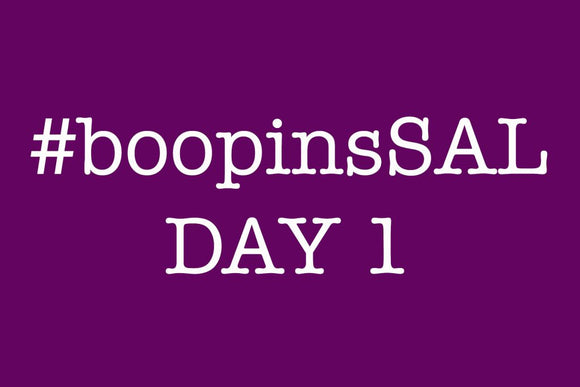Hello and welcome to the first BOO! Sew Along!
Sew along’s are designed to give you confidence to step out of your comfort zone and try something that you maybe didn’t think you were capable of or have made time to try previously. It is more fun when we all do it together, your own personal cheer squad!
You are welcome to ask questions along the way and there will be a question post in the BOO! pattern club. If all questions can be asked in the same thread, it will be a great reference to come back to later for others who have similar questions.
This is a link to the LEGGINGS SAL DAY 1 thread (also accessible via the Pattern Club Group Photo Albums section).
Throughout the sew along you can tag your posts on social media with #boopins #boobabypins #boopinsSAL #boopinsSALday1 if you like!
Today we will cover the following topics:
- Measure your model to decide size or mixed sizing needs
- Suitable fabrics / stretch test
- Print and stick pattern
- Cut out your leggings
Let’s get started….
1. MEASURE YOUR MODEL
This is the most important part. To get a nice fitting pair of leggings, it is worth spending the time to take measurements. Making according to ready to wear sizing may not always give you the best fit possible and if you are going to the effort of making something, you might as well make it fit really well!
Use the measurement instructions from the pattern to take height, hip and thigh measurements (Leggings pattern – page 4-5, Baby Leggings pattern – page 4).
Optionally record inside leg measurement too.
The measurements in the pattern suggest finished inside leg length, so measure to around the ankle bone.
p.s. excuse the rashie that is now a size too small (should really make the poor kid a new one) and the pants that don’t match (apparently because they are both stripes, they DO actually match… silly me).
Now you have your sizing, work out what size you need to make. If you have a mix of sizes, the ‘Get the Right Fit’ information in the pattern will help you determine what changes are needed (Leggings pattern – page 7, Baby Leggings pattern – page 5).
2. LET’S TALK FABRICS!
You want to use 4-way stretch fabric which basically means fabric which stretches fairly equally both side to side and up and down. You can use polyester/spandex (which is what majority of my prints that I carry are), nylon/spandex (which is what majority of my solids that I carry are) or Cotton Lycra. You can use 2-way stretch fabric provided the maximum stretch runs horizontally around the body but frankly, it is just not as comfortable and when you bend your knees or bend over, because it doesn’t have as much give vertically.
Not all fabric stretches equally which is why I have included a ‘stretch guide’ in the pattern for you to reference (Leggings pattern – page 8, Baby Leggings pattern – page 6).
You don’t need a cut piece of fabric to check the stretch, just mark a 4″ (10cm) section along the edge of your fabric. Tightly press your thumb over one of the markings and stretch. You want to stretch until you have fairly good resistance, it is not necessary to stretch as far as you possibly can!
The reason the stretch test is so important is because fabrics with different stretch may require adjustments to the pattern. e.g. some foil fabrics have less stretch meaning that you need to go up a size, some cotton lycra’s are super stretchy meaning you need to go down a size.
It is also important to check ‘recovery’. This just means that when you let go again, your original markings return to be the same width as they started. If it does not have good recovery, then the leggings will get bigger throughout the day as they are being worn and become sloppy and uncomfortable.

3. PRINT YOUR PATTERN
The beauty of PDF patterns is the convenience in that you can buy it and nekminit it is on the printer ready to go!
For the girls leggings pattern there is a large format option for you to be able to print at a copy shop (most use Officeworks in Australia). When printing, you need to ask for it to be printed without scaling (don’t shink to fit page), you should also ask for it to be printed as a ‘plan’ on black and white and it should set you back $3-4.
For me it is about 20mins to Officeworks and when I get there I buy way more than I should, so I prefer to print and stick at home, it is WAY faster and WAY cheaper (since I haven’t purchased a bunch of crap that I didn’t really need at the same time). There are A4/Letter format pages that can be printed at the back of the pattern tutorial on your home printer. It is really very quick to print and tape together.
When printing at home check that you are printing ‘Actual size’ (not FIT to page) or that your scaling is set to 100%.
Select Auto portrait/landscape for your orientation if you have a choice and that will nicely centre it on the page for you.
You don’t need to print out the whole tutorial, most people prefer to just look at the instructions on computer/tablet/mobile and only print the pattern pages.

CHECK YOUR 1″ SQUARE – I mean it! Do this before you go any further, whether you have printed at Officeworks or home, check this immediately! If you purchased a sew along bundle, you will have a little 1″ ruler in your parcel that is perfect for checking this! Your test square needs to measure exactly 1″ (2.54cm) if it is not this size, it means you have ‘fit to page’ set when printing and will need to reprint or your garment will not fit.
Now for sticking together your pattern, if you have a good window and are sewing in daylight hours, you don’t actually need to cut around the outlines on your pages. Simply pop them up against a large window and overlap the pages. The sunlight will provide enough transparency for you to be able to overlap and stick the pages.
If you don’t have the luxury of sewing in the day time, simply cut off the right hand border and bottom margin to stick your pages together! You can use a paper cutter or your trusty ‘non-sewing’ scissors for this!

Optionally write sizing information on your pattern piece.

4. CUT OUT YOUR LEGGINGS
Now you know what size your model is and whether you need to make any adjustments for fabric, cut out your pattern piece!
When laying out your pattern, you need to ensure that your cut fabric pieces are a ‘pair’ or a mirror image (you don’t want 2 left legs or 2 right legs). The fastest way to cut out the pattern pieces it so fold the fabric in half with either right sides together or wrong sides together.
Consider your placement. Could you maybe get another pair of leggings out of the fabric that you have? If your print is non-directional, you could possibly position your pattern piece sideways instead to get more out of your fabric.
I have rotated my fabric sideways to cut this size 5 because I only had a little bit of fabric!
Sticky tape dispensers, spaghetti tins or quilting rulers make good paperweights when cutting out your fabric. I also often move to the floor when cutting spandex because it is easier due to the weight of the fabric.

That’s it, Day 1 is over! Tomorrow we will start practicing our settings on some scraps before starting on the leggings!



Jennifer
When making leggings for girl with a waist larger than her hips what is the best way to alter the pattern